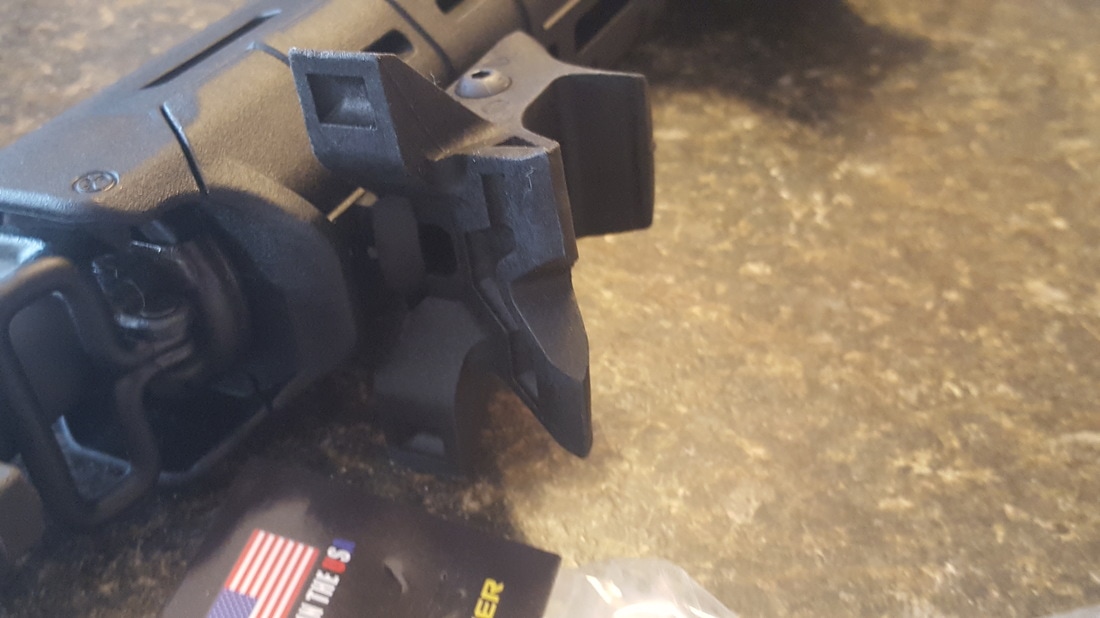Basically the FANG was invented by a veteran(James Renteria) with a significant military and contracting background. His resume speaks volumes to his understanding of the priorities one must have in order to run a gun effectively in combat. After sustaining an injury that limited his ability to use one of his arms, he still wanted to run competition. But due to his injury, he had a hard time holding up his rifle during some of the courses of fire that would require the other arm as a stabilizing brace against a barrier. But this did not stop him, and he decided to look for a way to give himself a fighting chance. While taking a college class on 3D printers, he used the opportunity of a class project to make something that would hopefully fix the problem he was having. Thus, the FANG was born.
Since the first FANG was produced, the company has used 3D printers to make all of them. This has saved alot of time and labor, keeping the price low, and the consistency of quality high. Not to mention that the feedback from end users has mostly been positive. James was able to effectively employ his rifle in competition due to this invention, despite his disability, which normally would hinder his capability. But as they say, necessity is the mother of invention. And like the motto of Spotter Up, he was dedicated to "find a way, or make one."
I myself tried out the FANG dry and found that it can be a solid platform in which to index your hand for the C clamp grip. I myself think the C clamp is a joke and a ridiculous method without universal application. But nonetheless, the FANG seems to serve as a good gripping point for that method. But overall, I don't see that much of a multi tool in the FANG. I think it is a well designed implement that could fit a couple of other roles, but I have yet to see it. Perhaps I am just short sighted and not that inventive myself.
I found the merit of the system when I first used it to stabilize my rifle around a tire barrier. Just touching the tire and applying light pressure against it absorbed any sway. It amazed me with how such a simple touch could absorb any movement in my sights. All that was left was to pull the trigger as fast as needed in order to make the shot in a timely manner. This is definitely a fine example of how simple innovation can make all the difference in how you perform. At such a reasonable price compared to other modifications or accessories, I find the shooting stabilizer to have great potential to any user that may need help in keeping their rifle steady for a long range, or even a short range shot. After all, the goal is to make timely and precise shots at any range, no matter what the application or situation is. No one has ever said that a miss is acceptable. Consider the shooting stabilizer if you find yourself in need of an inexpensive alternative to modifications that will typically only give you marginal improvements. I will follow up later on once I get more trigger time on this piece of gear.


 RSS Feed
RSS Feed